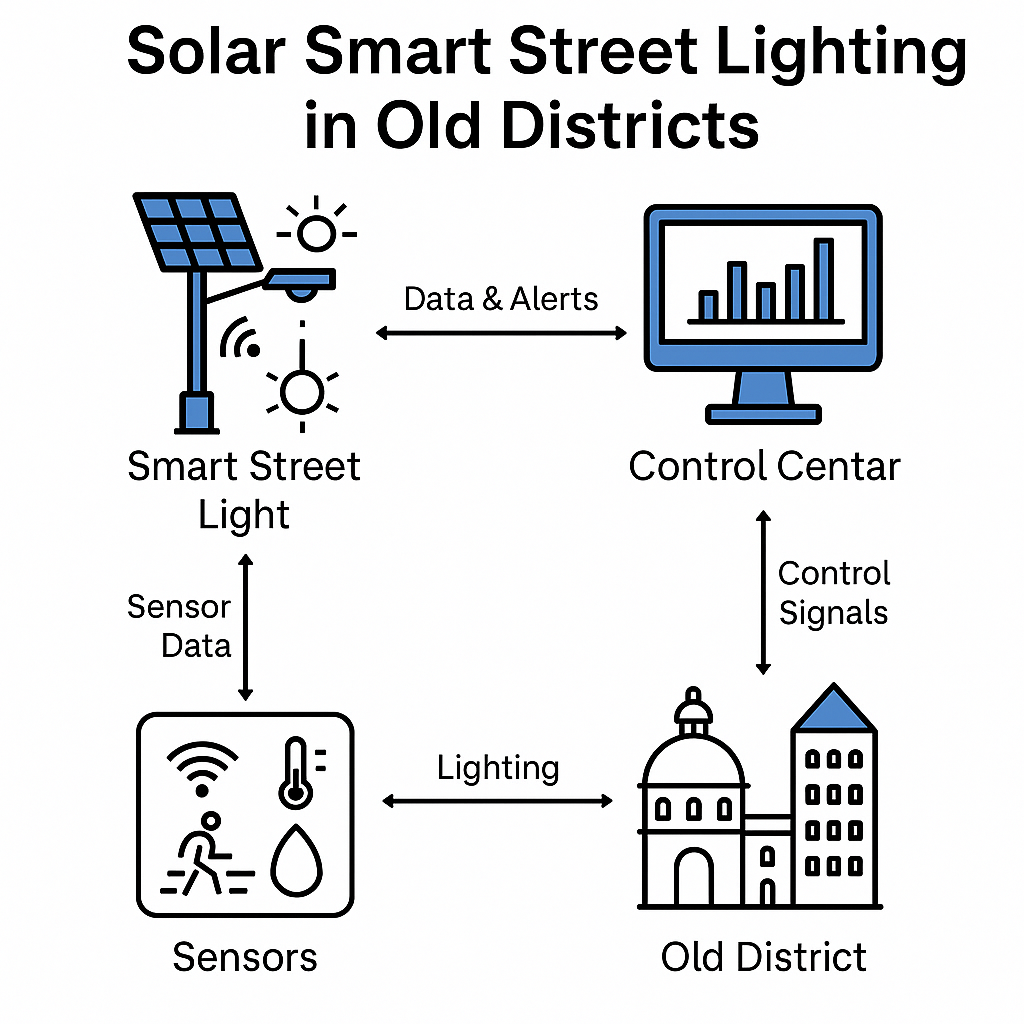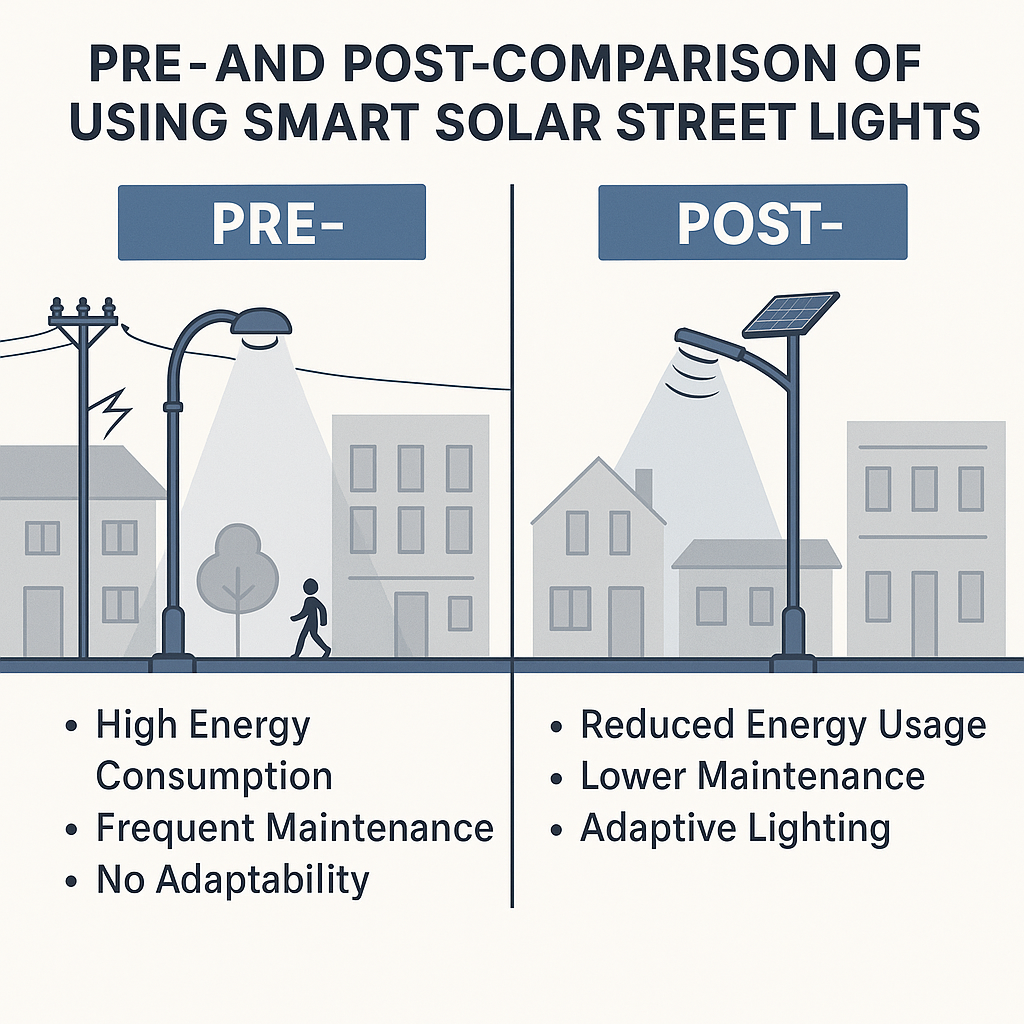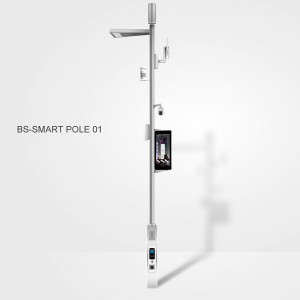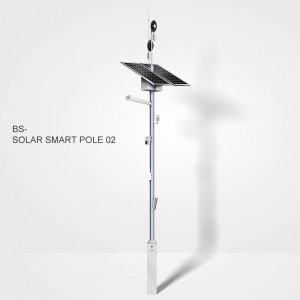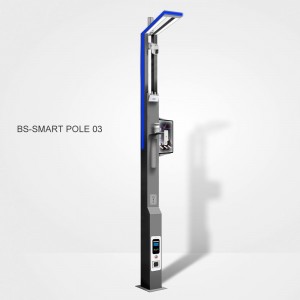The Value of Smart LED Solar Street Lights in Old Urban District Planning and Construction
In order to comprehensively improve the street light construction level of old city roads, we need to make full use of intelligent technology and actively study and adopt LED solar energy street lights. By building a perfect technical operation system and optimizing the installation quality of intelligent street lights, we can realize the win-win situation of economic and environmental benefits and promote the sustainable development of the city. Based on this, the article discusses the design and application of smart LED solar streetlights in old urban areas in the city, combines the analysis of the difficulties in the design and application of smart LED solar streetlights in old urban areas with the analysis of the difficulties in the design and application of smart LED solar streetlights in old urban areas, and explores the strategy of designing and applying smart LED solar streetlights in the old urban areas of from designing ideas, the main controlling structure, the logic system, as well as the specific application. The integration of smart city street lighting into urban planning enhances energy efficiency, reduces operational costs, and contributes to safer, more accessible environments. For old city districts, these benefits are especially critical, as traditional lighting systems often suffer from inefficiency and high maintenance needs. Upgrading to smart street lights can support revitalization efforts by providing modern infrastructure that aligns with sustainable development goals and smart city visions.
Difficulties in the Design and Application of Smart LED Solar Street Lights in Old Urban Areas
Installing Weak Infrastructure, Difficulty in Installation and Maintenance
The fragile or absent utility infrastructure in old urban districts means that even basic installations can become complex. The smart street light project should prioritize solar smart street light models with independent power generation and wireless communication capabilities. This reduces the need for deep excavation or rewiring. Lightweight poles and modular components can ease both the installation and future maintenance processes, minimizing disruptions to community life.
smart street light systems in aged districts poses distinct challenges:
- Limited underground infrastructure complicates wiring and connectivity.
- Historical preservation regulations may restrict physical modifications.
- Existing street layouts may not allow optimal sunlight exposure for solar panels.
- Data connectivity and power grid integration can be difficult due to outdated systems.
- These limitations demand creative engineering and policy flexibility to ensure successful deployment.
Intelligent LED Solar Street Lights in Old Urban Areas
For effective implementation in legacy environments, intelligent LED solar street lights should be designed with:
- Compact and modular designs to fit narrow or irregular roadways.
- Battery storage optimization to ensure lighting performance during low sunlight conditions.
- Adaptive control systems that adjust lighting based on real-time pedestrian and vehicular traffic patterns.
- Integration with heritage aesthetics, using lamp post designs that blend with historical surroundings while supporting modern functionality.
Design and Application Strategies of Smart LED Solar Street Lights in Old Urban Areas
Conduct detailed site assessments to map solar exposure and infrastructural constraints.
Engage urban historians and planners to align smart lighting with architectural preservation.
Use hybrid energy systems (solar + grid backup) in low-light areas.
Establish pilot zones to test performance and community feedback before a large-scale rollout.
Provide local training programs for maintenance crews to ensure sustainable operation.
By aligning technical, cultural, and administrative strategies, the smart street light system project can successfully transform old districts into smarter, more efficient, and more livable environments.
Specific Application of Smart Street Light Project
LED solar street light in the old city with integrated pole design and application is to improve the quality of urban lighting, to promote the important initiative of green development. As the support structure of smart street lights, the design of the integrated poleneeds to fully consider the special environmental requirements of the old city. In the specific design, a modular solar street light integrated pole can be selected. The modular pole is made of high-strength, corrosion-resistant material, and its height is designed to be 8 m to ensure good lighting range and wind resistance. The pole structure adopts a modular design, which is easy to install and maintain.
Smart Solar Street Light Usage Pre-Post Comparison
| Metric | Before (Traditional Lighting) | After (Smart Solar Lighting) |
| Energy Consumption (kWh/year per light) | 1500 | 250 |
| Maintenance Frequency (repairs/year) | 3.5 | 0.5 |
| Operational Cost ($/year per light) | 200 | 50 |
| Lighting Adaptability (Scale 1–10) | 2 | 9 |
| Installation Cost ($/light) | 800 | 1000 |
| Carbon Emissions (kg CO2/year per light) | 400 | 40 |
| Downtime (hrs/month) | 12 | 1 |
| Data Monitoring Capabilities | None | Real-Time (IoT Enabled) |
Meanwhile, multiple interfaces are reserved to support the upgrading and expansion of in the future. In specific applications, this integrated pole was installed on the main road and branch road of an old city [4], making full use of the existing infrastructure during the installation process, and optimizing the wiring scheme to reduce the impact of the construction on the life of the residents. Actual operation data shows that the pole can stably support the smart LED solar streetlights and effectively resist the impact of bad weather. In addition, the pole integrates a variety of intelligent sensors and monitoring equipment, realizing real-time monitoring and remote control of the lighting system.
Reliable Intelligent Street Light Power Supply System
The specific design and application of the power supply system of intelligent LED solar street lights in the old city
The area is an important part of ensuring the stable operation of street lights and realizing energy saving and emission reduction. Ensure that solar energy can be effectively absorbed under different lighting conditions. The energy storage battery pack adopts a lithium-ion battery, which has the characteristics of high energy density and long life to meet the demand of continuous lighting of street lamps. The energy storage battery pack is connected to an intelligent controller, which realizes a stable power supply to LED lamps by precisely controlling the charging and discharging process of the battery, and ensures that the street lamps work normally for more than a few days even in continuous cloudy and rainy days. In addition, the power supply system is equipped with a remote monitoring function, which monitors key parameters such as the working status of the solar panels, the remaining power of the storage batteries, and the brightness of the LED luminaires in real time through the Internet of Things (IoT) technology.
IoT Smart Lighting Control System
The specific design and application of the lighting control system for smart LED solar streetlights in old urban areas is crucial for improving lighting quality and realizing intelligent management. The system integrates advanced sensor technology, wireless communication technology, and intelligent control algorithms to realize precise control of LED solar streetlights. Through the light sensors and human infrared sensors installed on the street lamps, the system can sense the environmental light and human flow in real time, and automatically adjust the brightness and switch state of the street lamps. The system is connected to the street light through a wireless network to realize remote monitoring and control. Managers can view the working status and energy consumption data of streetlights in real time through cell phones or PC platforms, and make remote adjustments as needed. This not only improves the efficiency of management but also reduces operation and maintenance costs. In addition, the lighting control system is equipped with self-diagnosis and alarm functions. Once a street light failure or abnormal situation is detected, the system will immediately send alarm information to the management personnel for timely treatment, which greatly improves the stability and reliability of the street light system and ensures the safety of night lighting in the old city.
FAQs about how the solar smart street light improves city infrastructure
What are solar smart street lights, and how do they work in old city districts?
Solar smart street lights are self-sustaining lighting systems that use solar panels to generate energy, LED lights for efficiency, and smart controls for adaptive lighting and remote monitoring. In old city districts, they function independently of outdated or overburdened electrical grids, making them ideal for areas with weak infrastructure.
Can solar smart street lights be used in areas with poor sunlight exposure?
Yes, with limitations. In such cases:
High-efficiency solar panels and larger battery storage are essential.
Hybrid systems that draw backup power from the grid can be used.
Lights with motion sens
Are solar smart street lights cost-effective for retrofitting old neighborhoods?
Yes. While initial costs may be higher than conventional lights, long-term savings on electricity and maintenance, along with reduced installation costs due to no trenching or grid connection, make them highly cost-effective in the long run.
How can old cities ensure aesthetic compatibility with smart lighting technology?
Custom-designed smart street light poles and fixtures can replicate historic designs while housing modern technology. Collaborating with urban designers and heritage authorities ensures that smart street light projects respect the area's visual identity.
Can smart street lighting help with public safety in older urban areas?
Adaptive brightness and motion-triggered lighting. Integrated surveillance or emergency systems improve visibility and deter crime, enhancing the overall safety of old neighborhoods.
Post time: Jun-21-2025


